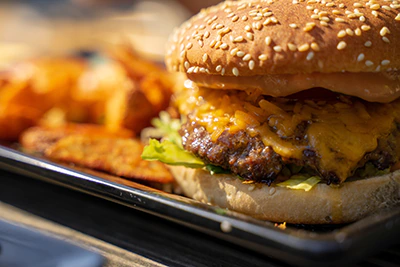| Essence |
L-Ascorbic Acid or E300 is an organic compound (a vitamin) that occurs naturally in various fruits (like lemons, grapefruits, oranges, etc.) and vegetables (chili peppers, kale, broccoli, etc.) and has powerful antioxidant properties. |
| Names |
Vitamin C, 3-Keto-L-Gulofuranolactone, 3-Oxo-Laevo-Gulofuran, INS 300, Laevo-Ascorbic acid, E300, L-Ascorbic Acid, and others. |
| Sourcing |
Commercially, it is typically made out of D-Glucose. |
| Manufacturing |
To create the L-Ascorbic Acid, D-Glucose gets hydrogenated by a nickel catalyst. This creates D-Sorbitol which then undergoes microbiological oxidation (Acetobacter xylinum). This creates L-Sorbose. This is then converted to 2-keto-L-Gulonic Acid through oxidation and further converted to either the additive or the Sodium Ascorbate. A solution of Sodium Ascorbate can be applied to cation exchange resins to create the Ascorbic Acid (without the L-). |
| Application |
Antioxidant (natural, water-soluble), acidity regulator, and preservative. |
| Acceptable Daily Intake |
None determined. |
| Side Effects |
None. But in extremely high amounts (upwards of 10 grams) can cause vomiting, dental erosion, dizziness, diarrhea, and kidney stones. |
| Benefits |
As a vitamin that our bodies can’t produce, it is vital for life. It promotes immune function, shields cells from the damage of free radicals, reduces chronic disease, helps to manage high blood pressure, supports heart health, prevents iron deficiency, protects the brain, and more. |
| Studies |
61,950+ studies on Pubmed. 1,090+ studies on safety. |
| Allergens |
None. |
| Diet Restrictions |
None. |
| Health Knight Assessment |
Only Beneficial. | Category 0 Additive. |
| Products |
L-Ascorbic Acid is found in processed foods like bread, dumplings, fruit juices, sandwiches, popcorn, pastries, pestos, soft drinks, baguettes, ketchup, pizzas, bagels, buns, dark chocolates, canned beef, biscuits, mushrooms, cinnamon rolls, hamburgers, canned fruits, cereal, energy bars, frostings, desserts, wafers, crackers, spreads, snack bars, protein bars, candy, canned peas, sherbets, cookies, toast sticks, instant drink mixes, croissants, sauces, chocolate bars, beans, muffins, croutons, tortillas, soups, and others. |



